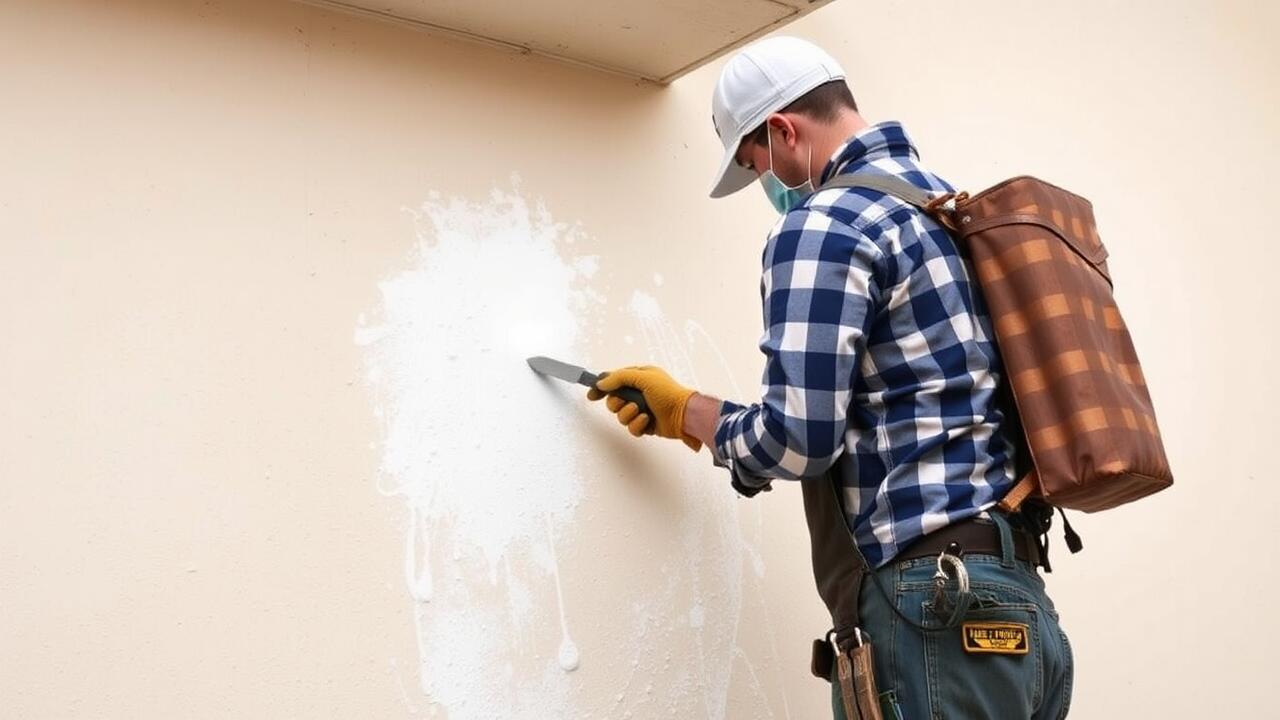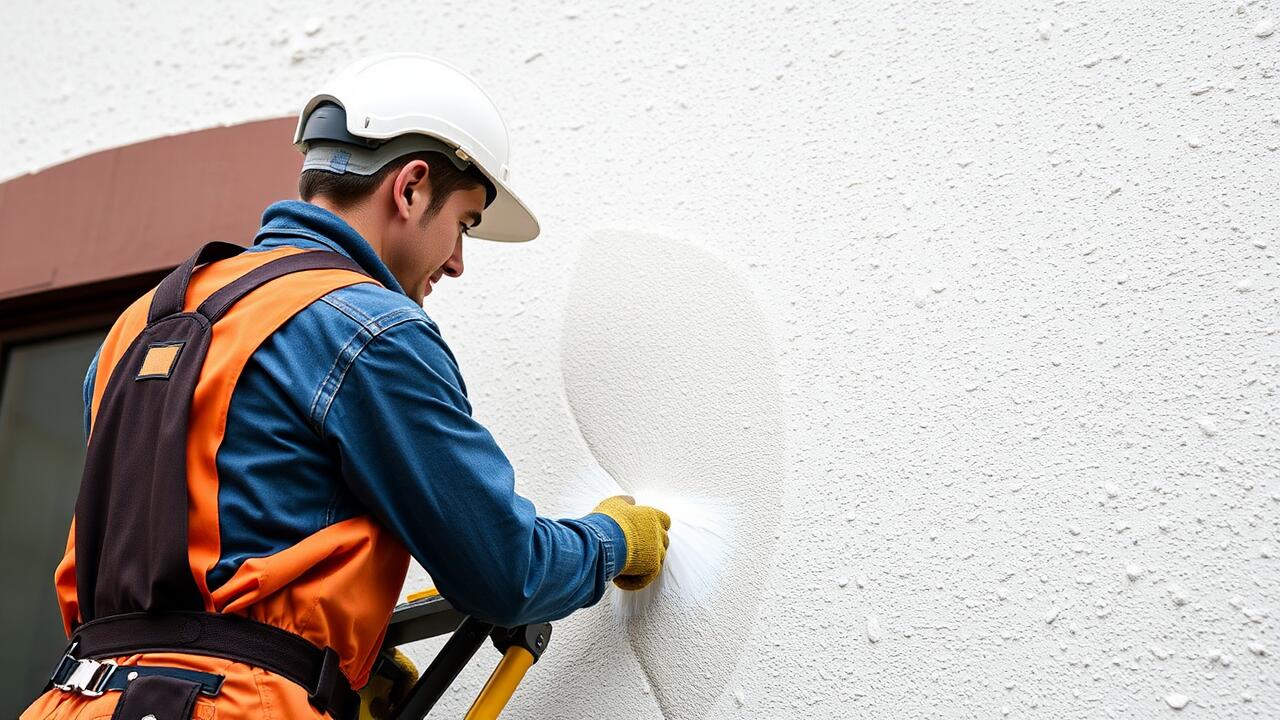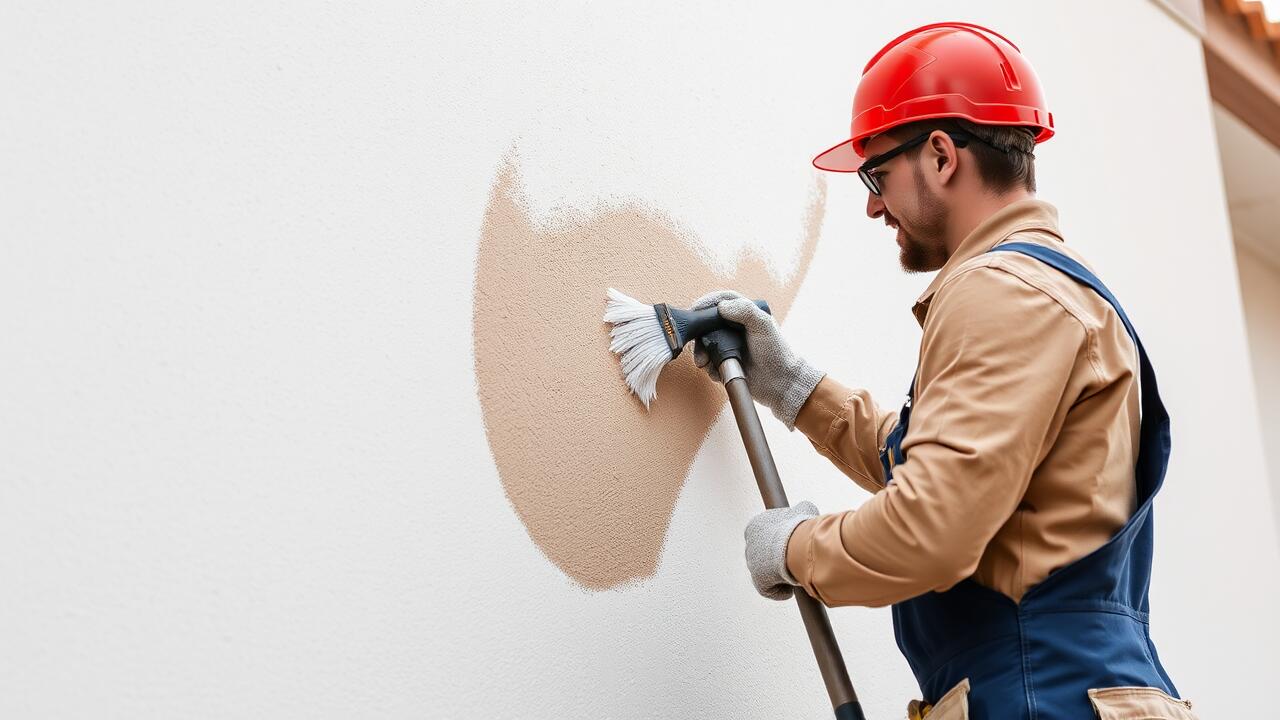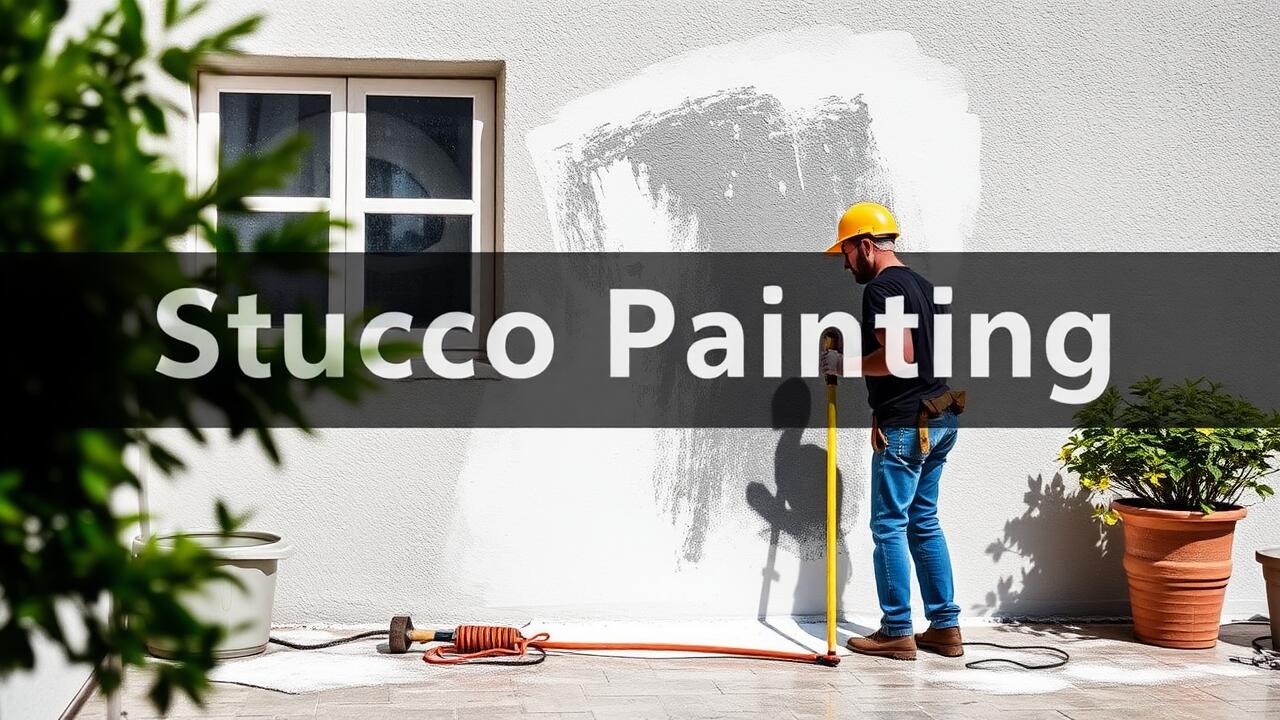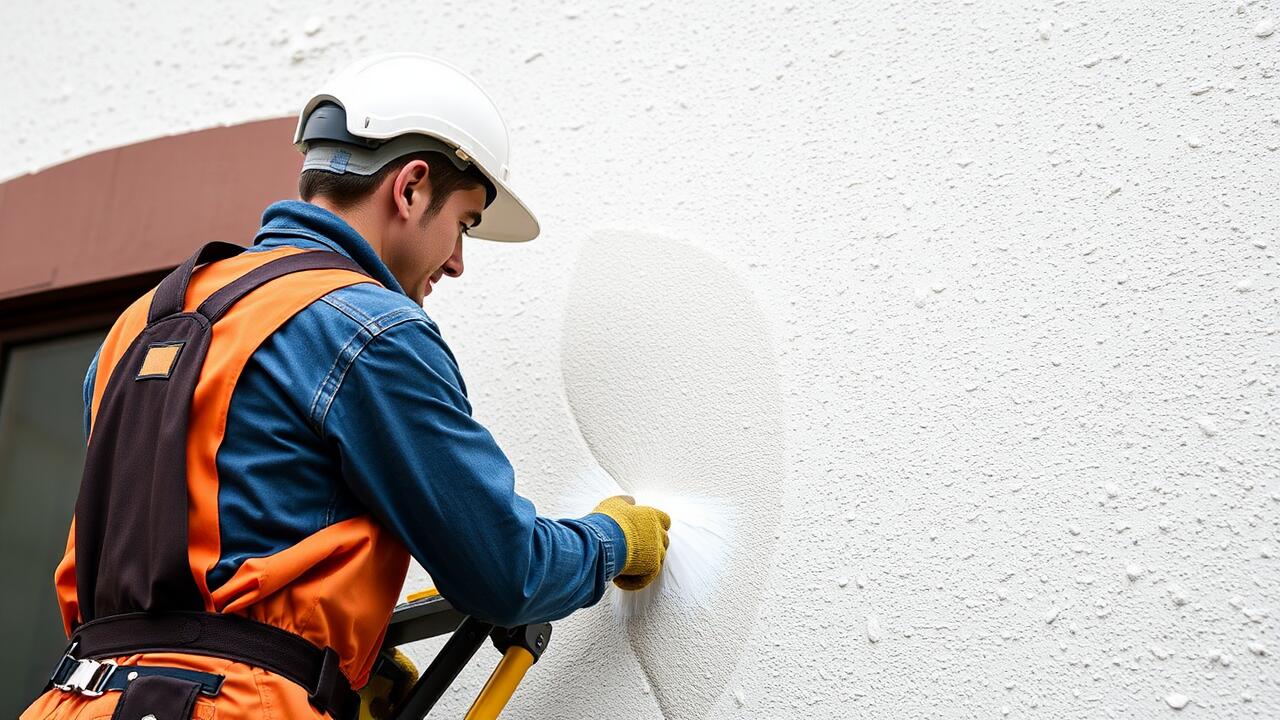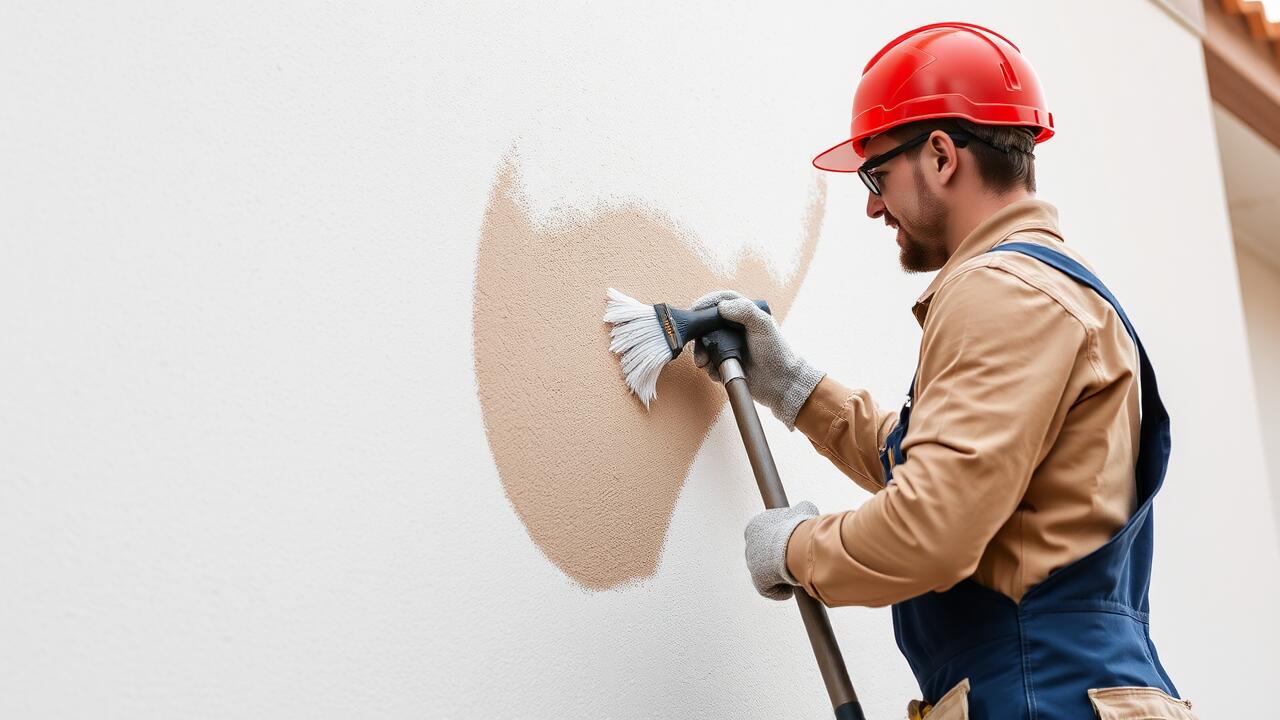
Primer Application Techniques
When applying primer to stucco, preparation is key. Start by ensuring the surface is clean and free of debris, which can interfere with adhesion. Using a power washer or a stiff-bristle brush can effectively remove dust, dirt, and any previous paint. Once cleaned, allow the surface to dry completely before proceeding with the primer application. This step is crucial, especially for projects like Stucco Painting in Downtown Los Angeles, Los Angeles, where humidity levels can vary.
For the actual application, using a roller with a nap appropriate for textured surfaces is recommended. This helps achieve even coverage and fills in the grooves common in stucco. If your project is extensive, consider using a sprayer to cover large areas quickly and uniformly. Always apply the primer in thin, even coats to avoid drips and ensure proper drying. This method enhances the final paint job while also maximizing the primer’s effectiveness.
Best Methods for Even Coverage
Achieving even coverage when applying primer on stucco is essential for a smooth finish. Start by using a high-quality roller designed for textured surfaces. These rollers allow for better paint distribution while effectively reaching all crevices and corners of the stucco. If you are working on a larger area, consider using a spray application for the primer. This method can provide a uniform layer without the risk of roller marks, especially useful for extensive stucco surfaces typical in projects such as Stucco Painting in Downtown Los Angeles, Los Angeles.
In addition to your application tools, paying attention to your technique is crucial. Apply the primer in sections, working in manageable areas to maintain control and ensure an even coat. Overlap your strokes to eliminate any missed spots. If you notice any particularly dry patches or uneven areas, back-roll over these spots after spraying or rolling them. This technique helps to smooth out the primer, enhancing coverage and creating an ideal base for the final paint layer.
Drying Time and Curing
Understanding the drying time and curing process of primer on stucco surfaces is essential for achieving a professional finish. Typically, primer should dry to the touch within an hour, though complete curing can take several hours to a few days, depending on environmental conditions such as temperature and humidity. In locations like Downtown Los Angeles, where heat and direct sunlight can speed up drying, it's crucial to monitor the surface for proper time intervals before proceeding with additional coats or painting.
Several factors can influence how quickly primer dries and cures. Higher temperatures can accelerate the evaporation of solvents, while high humidity can extend drying times significantly. For those engaged in stucco painting in Downtown Los Angeles, it's advisable to consider these factors and plan the application accordingly to ensure optimal results. Avoid applying primer during extreme weather conditions to prevent issues like bubbling or peeling, both of which can compromise the integrity of the finish.
Factors Influencing Primer Drying
Several factors significantly influence the drying time of primer applied on stucco surfaces. Humidity levels play a crucial role; high humidity can lead to prolonged drying times as moisture in the air slows down the evaporation process. Similarly, temperature is a key factor; cooler temperatures can delay the drying, while warmer conditions typically expedite the process. Additionally, the type of primer used can also affect drying time, as some formulations are designed to dry faster than others, particularly in environments like Stucco Painting in Downtown Los Angeles, Los Angeles.
Surface texture can further impact how quickly primer dries on stucco. Rough or porous surfaces tend to absorb more moisture, which may result in extended drying times compared to smoother finishes. Wind conditions also play a part; a breezy day can help speed up drying by increasing air circulation around the freshly applied primer. All these elements can interact uniquely depending on the specific environment and conditions present on any given project.
Troubleshooting Common Issues
When dealing with common issues during primer application on stucco, it’s crucial to identify potential pitfalls early. One frequent challenge is the presence of air bubbles or blisters in the primer layer. These can occur due to improper mixing of the primer or applying it in excessively hot conditions. To address this, inspect your mixing technique and ensure that you are applying the primer during favorable weather conditions. For optimal results, aim for milder temperatures when carrying out stucco painting in Downtown Los Angeles, Los Angeles.
Another common issue is peeling or flaking primer after it has dried. This often stems from inadequate surface preparation prior to application. It’s essential to thoroughly clean and repair the stucco surface to ensure proper adhesion of the primer. If peeling occurs, you may need to scrape away the affected areas and reapply the primer once the surface is properly prepped. Taking these precautions can help minimize problems down the line and enhance the overall finish of your project.
Addressing Problems During Primer Application
When applying primer to stucco, various issues can arise that may affect the overall finish. Common problems include uneven application, drips, and visible streaks. Identifying the source of these issues is crucial. For example, uneven pressure during application or using an incorrect tool can lead to inconsistent coverage. It is essential to ensure that brushes, rollers, or sprayers are suitable for the texture of the stucco surface. Regularly inspecting the work as you progress can help catch these problems early.
Weather conditions can further complicate primer application, particularly in areas like Stucco Painting in Downtown Los Angeles, Los Angeles, where temperature fluctuations are common. High humidity or sudden temperature drops can hinder drying and result in prolonged curing times. To mitigate these effects, keep an eye on the weather forecast and plan the application accordingly. If issues arise, consider adjusting the application technique or choosing a primer designed for challenging conditions to achieve a smoother finish.
FAQS
What is the purpose of applying primer on stucco?
The primer helps to create an even base for paint or finish coatings, enhances adhesion, and improves the durability of the overall surface.
How long should I wait before applying a second coat of primer on stucco?
It is generally recommended to wait at least 1 to 4 hours before applying a second coat, but it's best to check the manufacturer's instructions for specific drying times.
What factors can influence the drying time of primer on stucco?
Factors such as temperature, humidity, air circulation, and the thickness of the primer coat can all affect drying time.
What should I do if I notice streaks or uneven patches after applying primer?
If you see streaks or uneven patches, you may need to lightly sand the area to smooth it out and then apply a thin additional coat of primer for better coverage.
Is it necessary to clean the stucco surface before applying primer?
Yes, cleaning the surface is crucial. Removing dust, dirt, and loose debris ensures better adhesion and a smoother finish for the primer.
